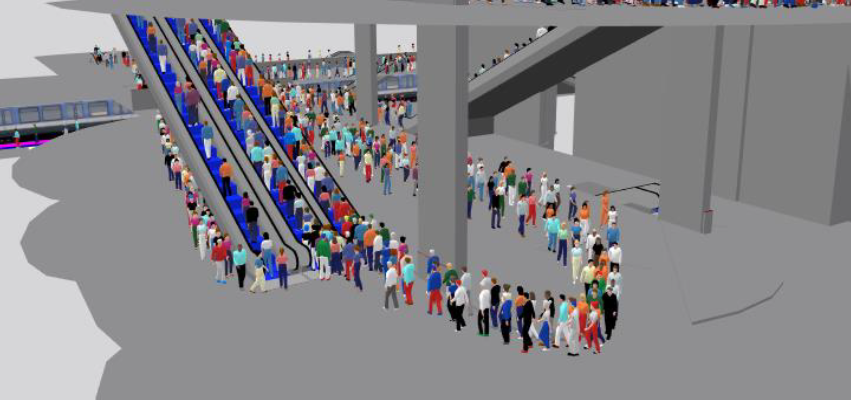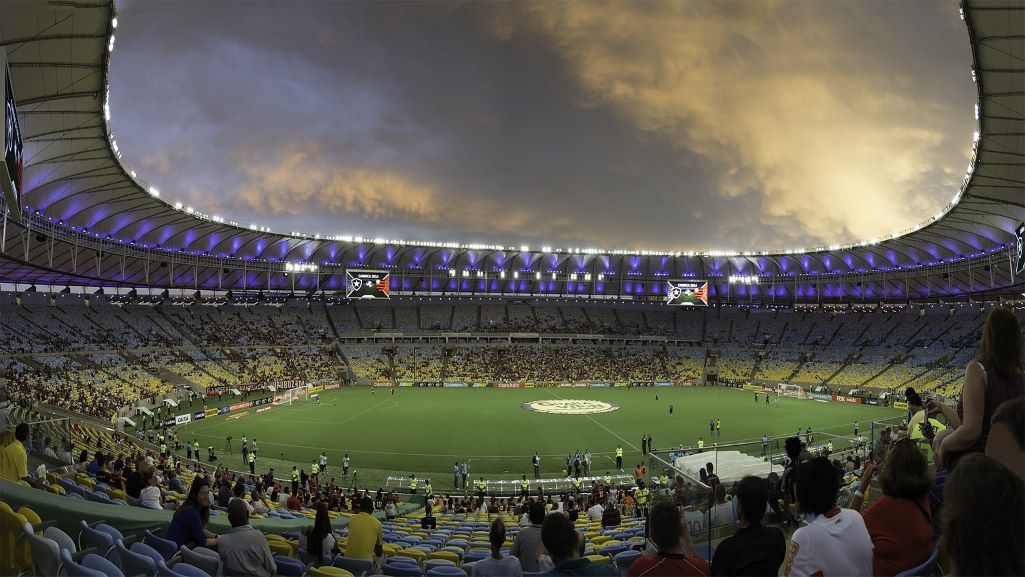São Paulo’s future metro line 20-Rosa promises to reshape the megacity’s public transportation network. It will have a profound impact on passengers and urban planning. PTV Vissim, the state-of-the-art traffic simulation software, is supporting the project by ensuring the correct design of its transfer stations.
The project
With an impressive length of 33 kilometers and 24 stations, Line 20-Rosa is currently in the design phase. It will be a vital line for approximately 1.3 million daily passengers, ushering in a new era of connectivity between the cities of São Paulo, São Bernardo do Campo and Santo André.
This ambitious project represents not only an extension of the metro system, but also a new link with other public transport systems in these cities, integrating metro, train and bus lines.
A critical aspect of the success of Line 20-Rosa is the efficient design and management of its stations. In particular, the stations – or integration hubs – where passengers will transfer to or from other modes of public transport.
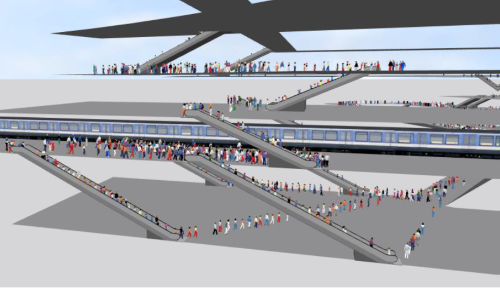
Pedestrian Behavior Analysis
This is where PTV Vissim comes in: The simulation tool is being used by the engineering company TYLin to design 7 stations on the new line.
Founded in Brazil in 1991, TYLin is now present in five countries. In Brazil, the company has extensive experience in complex mobility and infrastructure projects.
By realistically modeling pedestrian flows and station dynamics, PTV Vissim provides invaluable insights that guide infrastructure improvements and optimize the user experience.
In this project, for example, it helped us integrate public transport simulation with pedestrian areas to analyze how these two elements behave in a single network. This integration makes projects like this possible and expands the range of scenarios that can be created.
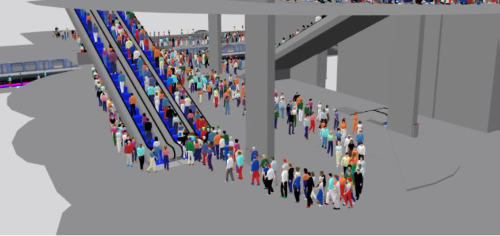
The results
The results of the microsimulation of Line 20-Rosa are not just statistics; they represent a paradigm shift in urban mobility planning.
TYLin’s analysis, powered by PTV Vissim, showed that the designed stations are well equipped to handle the projected passenger volumes, but with targeted refinements to further improve service standards.
For example, stations were identified where the results indicated the need for additional escalators or changes in the positioning of escalators to satisfactorily meet passenger flows and established service levels. At other stations, key locations in the operational strategy were identified in terms of escalator direction and flow divider positioning.
These recommendations highlight the role of the software in adjusting station layouts for optimal efficiency and passenger comfort.
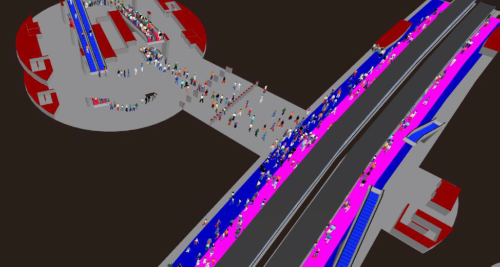
Conclusion
The importance of PTV Vissim extends beyond this project and illustrates its broader role in the design of modern cities. By facilitating evidence-based decision-making and proactive adjustments, the software epitomizes the shift toward data-driven urban design.
PTV Vissim enables planners to anticipate challenges, evaluate solutions, and ultimately create transportation systems that meet evolving needs. Projects such as this one of metro stations in Vissim allow for the testing of different scenarios to determine which will have the best operational performance and promote the greatest user comfort.
In essence, Line 20-Rosa symbolizes São Paulo’s ambition to redefine urban mobility, with PTV Vissim as the fundamental technology driving this vision. As we eagerly await the next steps of this transformative metro line, we are reminded of the profound impact simulations can have on improving urban networks. Embracing such advances promises a future where cities not only connect, but also optimize the well-being of their residents.
Note: The station simulations were done by Lucas Balbino, Monaliza Izidorio and Sílvia Mauad, under the guidance of the Line 20 Project Coordinator, Jane Aoki Alberto.
A PTV Vissim simulation of passengers boarding and alighting at a planned Line 20-Rosa station
The authors

Sílvia Vitali Santos Mauad
Engineer, TYLin Brazil

Monaliza Izidorio Pinheiro
Architect and Urban Planner, TYLin Brazil

Lucas Balbino Pereira
Architect, TYLin Brazil
Related Products



